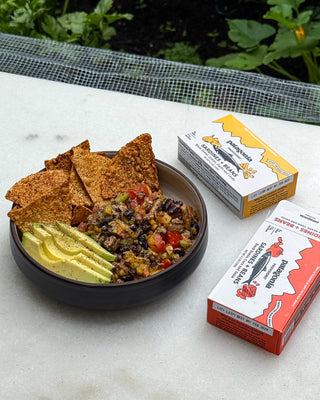By Dr. Carl Safina
I wonder if a vision of her life is passing before her as she lies here with that one unblinking eye staring up at the enormous trees overhead and the sunlit sky beyond them. I suppose not. I can only suppose that she has no recollection of the urges that have driven her, no recall that as a youngster she left this stream to travel under the ocean's broad roof to the deep heart of the sea and back. And I suppose she cannot now remember fighting her way against the river's torrent and leaping up sunlit falls and choosing a strong mate. Does she even know that she has laid her eggs, fulfilled her part in shaping the future? Can she remotely realize that each day she lived, comrades fell to natural catastrophes and cunning predators and diseases and accidents and nets and hooks and the structured works of humanity? As she lies dying here, can she possibly understand that she has survived?
Everything that could ever go right for a salmon has gone right for her. But for most salmon here along North America's Pacific Northwest coast, the reverse applies.
Once, salmon were merely the world's most complicated fishes, spending part of their life as freshwater fish, part as saltwater fish, and yet another part again as freshwater animals bent single-mindedly upon self-destruction through reproduction – immortality through suicide. These different stages demand extreme physical changes and navigational abilities as advanced as those of any living being and more advanced, by far, than most. Their mystery filled native people with reverence, and their facts – those we have discovered – likewise fill scientists, naturalists and modern anglers with awe.
Ranging as they can from the Continental Divide to the center of the ocean and back within one relatively short, humble, heroic life, salmon are exceptional by any measure. That life and story have become increasingly complex. Nowadays, one cannot see the salmon's world without adding to the tale the plot complications of logging, agriculture, hydropower, dams, politics, pesticides, foreign markets, private property rights, public property fights, recreational, commercial and subsistence fishing, and artificial reproduction. And one cannot see those interlocking sets of debilitating dilemmas without confronting the heights and depths of the human spirit, as a salmon cannot confront life without ranging between the purest of springwater and the bottomless depths of the deepest sea.
Shuttling as they do like silver threads between upland and ocean, abyss and summit, salmon tightly stitch the interlock between continent, torrent and tide, binding together everything humans do to land or water. And we do much.
The Great Northwest of the United States and Pacific Canada have become the world's extinction epicenter for ocean fishes. Nowhere else in the world are ancient lines of marine fish vanishing with such haste. Pacific salmon have disappeared from about 40 percent of their breeding range in Washington, Oregon, Idaho and California. In this region, salmon are extinct, endangered or threatened in two-thirds of the area they occupied 10 decades ago.
I fear this is not an aberration but a harbinger. Headlines from New England, news from the North Sea, reports from international conferences, and rumors from tropical shorelines all inform us similarly: We are not just using the seas; we are using them up. And as humans expand to fill the world, we rob other species of the grace of their existence. And so we rob ourselves. Extinction is an unusual form of death, because while most death adds a spoke to the wheel of life, extinction carries a peculiar finality, an end of lineages, a preclusion of futures. As the poet Gary Snyder put it, "Death is one thing, an end to birth is something else."
The Pacific Northwest, then, offers much we could study as through a window on the world. Among other things, we can study an array of human objectives, from those who tried to exterminate salmon with poison to those who worship the fish: an extreme range of views and policies, and thus human nature itself. Meanwhile, hope paces impatiently. Lessons learned in the Northwest - if we learn them - could be applied in the wider world; there is still time.
Only a few wild animals symbolize the heart and soul of a region. Tigers in India, lions and elephants in Africa, kangaroos in Australia. In North America, the buffalo of the Great Plains and the salmon of the Pacific Northwest supported economies, cultures and human self-identities. And though white settlers destroyed the buffalo in greed and in genocide against the natives, they embraced the salmon. Immigrants, like native peoples, saw in salmon something deep, powerful, moving and valuable – even if they approached the fish with less awe, less reverence and, consequently, less success than the natives had for millennia.
Think of the Northwest, and salmon soon come to mind. Whether they represent your demons or salvation, salmon loom large here. Certain other animals still symbolize their regions. But salmon are unique because their symbolic power and their ability to bestow significant economic and nutritional benefits on human culture have survived together to the 21st century. And this comprises the best hope in the struggle for salmon and the people who need and desire them.



